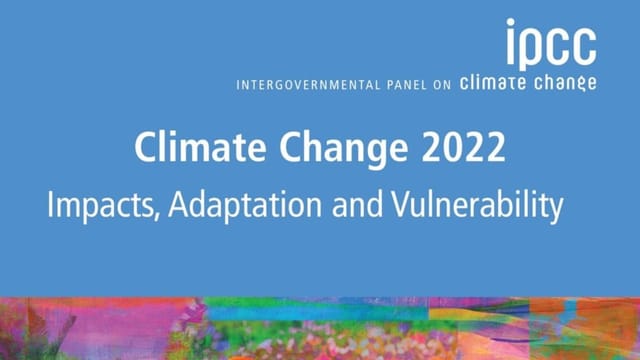Contents
According to a study using artificial intelligence, the 1.5-degree mark will be exceeded in about ten years. Is the algorithm a grouch or just a realist?
A question that worries the world: How much time and room for maneuver do we have until the earth has warmed up by a critical 1.5 degrees? According to artificial intelligence, this threshold could already be reached between 2033 and 2035. Even if we manage to reduce greenhouse gas emissions in the coming decade. One comes to this conclusion american studyfor which artificial intelligence researchers gave climate models to calculate.
The algorithm of the researchers from Stanford is not a grouch, Sonia Seneviratne classifies the study. The Swiss is one of the most cited climate scientists in the world. The calculations of the AI basically agree with that sixth IPCC report match.
Seneviratne collaborated on several of these reports on behalf of the Intergovernmental Panel on Climate Change. “The AI uses a different method to make similar forecasts and confirms that we are running out of time,” says the climate scientist and professor at ETH Zurich.
But the AI is even more pessimistic than the IPCC on one thing: even in a scenario with drastic CO₂ savings, the algorithm predicts that it is unlikely to keep the temperature rise below two degrees Celsius. In other words, the most important climate goal of the Paris Agreement would not be met in this case.
AI as an important supplement
The two-degree warming could be stopped by 2054 thanks to low environmental pollution, but not prevented. However, the study does not consider the most serious scenario of the Intergovernmental Panel on Climate Change, which aims to stabilize global warming at around 1.5 degrees. “It is unclear what the results of the AI would look like in this scenario,” says Seneviratne.
Freely available climate data in high resolution
So do people simply think of the future as beautiful? Not at all, says climate scientist Seneviratne. She explains: “These physical equations, on which the climate forecasts are based, could be undermined at certain threshold values. These considerations are not taken into account by the AI and no appropriate corrections have been made.”
In addition, with such calculations using AI, the people behind them are ultimately relevant. “They decide which information and models they use to train the systems.”
In addition, that research system was only trained with a selection of climate models, for the IPCC reports far more data is considered. Nevertheless: According to Seneviratne, forecasts made by AI are an important addition to the already established models. She is also doing research with it.
Reason for encouragement or for giving up?
The climate researcher does not see these pessimistic AI-generated forecasts as a reason to give up. On the contrary: She is encouraged to continue researching climatic conditions and different forecasts.
But something is important to her: the focus should be less on the exact dates and more on the insight: “There is no turning back.” The warming of the earth that we have already achieved – along with noticeable climate effects such as droughts and heat waves – will persist for several thousand years. The only solution is to produce less CO₂ and do without fossil fuels such as oil and coal. AI or not.

